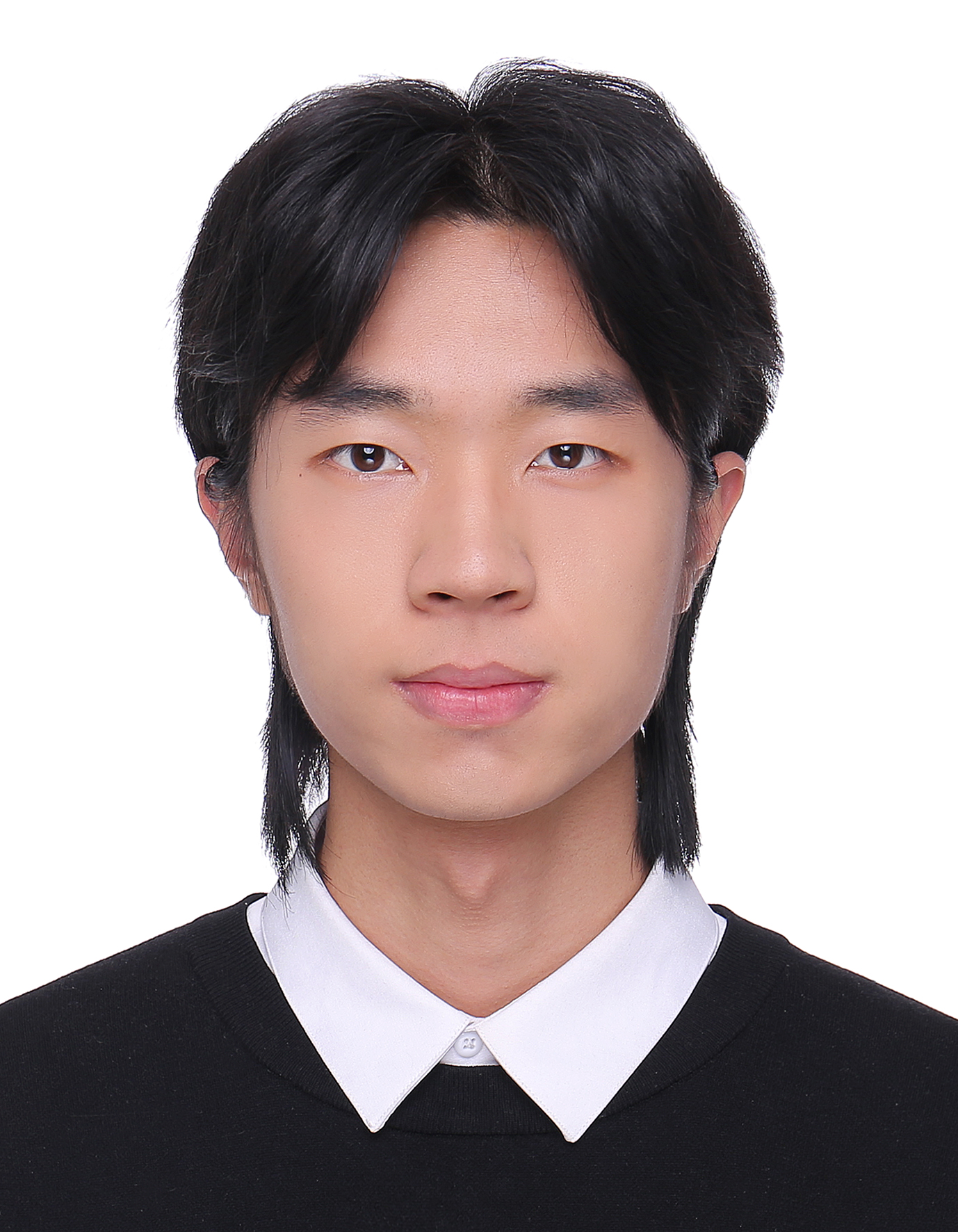|
I am a dual-degree master's student at Shanghai Jiao Tong University (SJTU) and Télécom Paris, advised by Prof. Xie Chen from X-LANCE Lab, SJTU and Prof. Slim Essid from ADASP Group, Télécom Paris. Currently, I'm interning at Tencent Hunyuan Team, working on multimodal understanding and generation. Previously, I received my Bachelor's degree from Shanghai Jiao Tong University in 2024. During that summer, I was a research assisstant at The Chinese Univeristy of Hong Kong (CUHK), working with Prof. Qiuqiang Kong at the DSP Lab, CUHK.
|

|
|
My primary research interests lie in audio understanding and generation.
Previously, I have worked on text-to-audio generation, automated audio captioning, large audio language models, and spoken dialogue systems.
|
|
|
|
Ziyang Ma, Xiquan Li, Yakun Song, Wenxi Chen, Chenpeng Du, Jian Wu, Yuanzhe Chen, Zhuo Chen, Yuping Wang, Yuxuan Wang, Xie Chen ACL, 2025 (Findings) Paper Recent advancements in large audio language models (LALMs) have demonstrated impressive results and promising prospects in universal understanding and reasoning across speech, music, and general sound. However, these models still lack the ability to recognize their knowledge boundaries and refuse to answer questions they don't know proactively. While there have been successful attempts to enhance the reliability of LLMs, reliable LALMs remain largely unexplored. In this paper, we systematically investigate various approaches towards reliable LALMs, including training-free methods such as multi-modal chain-of-thought (MCoT), and training-based methods such as supervised fine-tuning (SFT). Besides, we identify the limitations of previous evaluation metrics and propose a new metric, the Reliability Gain Index (RGI), to assess the effectiveness of different reliable methods. Our findings suggest that both training-free and training-based methods enhance the reliability of LALMs to different extents. Moreover, we find that awareness of reliability is a "meta ability", which can be transferred across different audio modalities, although significant structural and content differences exist among sound, music, and speech. |
|
Wenxi Chen, Ziyang Ma, Ruiqi Yan, Yuzhe Liang, Xiquan Li, Ruiyang Xu, Zhikang Niu, Yanqiao Zhu, Yifan Yang, Zhanxun Liu, Kai Yu, Yuxuan Hu, Jinyu Li, Yan Lu, Shujie Liu, Xie Chen ACL, 2025 (Findings) Paper / Code Recent advancements highlight the potential of end-to-end real-time spoken dialogue systems, showcasing their low latency and high quality. In this paper, we introduce SLAM-Omni, a timbre-controllable, end-to-end voice interaction system with single-stage training. SLAM-Omni achieves zero-shot timbre control by modeling spoken language with semantic tokens and decoupling speaker information to a vocoder. By predicting grouped speech semantic tokens at each step, our method significantly reduces the sequence length of audio tokens, accelerating both training and inference. Additionally, we propose historical text prompting to compress dialogue history, facilitating efficient multi-round interactions. Comprehensive evaluations reveal that SLAM-Omni outperforms prior models of similar scale, requiring only 15 hours of training on 4 GPUs with limited data. Notably, it is the first spoken dialogue system to achieve competitive performance with a single-stage training approach, eliminating the need for pre-training on TTS or ASR tasks. Further experiments validate its multilingual and multi-turn dialogue capabilities on larger datasets. |
|
Xiquan Li, Wenxi Chen, Ziyang Ma, Xuenan Xu, Yuzhe Liang, Zhisheng Zheng, Qiuqiang Kong, Xie Chen ICASSP, 2025 (Oral) Paper / Code While automated audio captioning (AAC) has made notable progress, traditional fully supervised AAC models still face two critical challenges: the need for expensive audio-text pair data for training and performance degradation when transferring across domains. To overcome these limitations, we present DRCap, a data-efficient and flexible zero- shot audio captioning system that requires text-only data for training and can quickly adapt to new domains without additional fine-tuning. DRCap integrates a contrastive language-audio pre-training (CLAP) model and a large language model (LLM) as its backbone. During training, the model predicts the ground-truth caption with a fixed text encoder from CLAP, whereas, during inference, the text encoder is replaced with the audio encoder to generate captions for audio clips in a zero-shot manner. To mitigate the modality gap of the CLAP model, we use both the projection strategy from the encoder side and the retrieval-augmented generation strategy from the decoder side. Specifically, audio embeddings are first projected onto a text embedding support to absorb extensive semantic information within the joint multi-modal space of CLAP. At the same time, similar captions retrieved from a datastore are fed as prompts to instruct the LLM, incorporating external knowledge to take full advantage of its strong generative capability. Conditioned on both the projected CLAP embedding and the retrieved similar captions, the model is able to produce a more accurate and semantically rich textual description. By tailoring the text embedding support and the caption datastore to the target domain, DRCap acquires a robust ability to adapt to new domains in a training-free manner. Experimental results demonstrate that DRCap outperforms all other zero-shot models in in- domain scenarios and achieves state-of-the-art performance in cross- domain scenarios. |
|
Wenxi Chen*, Ziyang Ma*, Xiquan Li, Xuenan Xu, Yuzhe Liang, Zhisheng Zheng, Kai Yu, Xie Chen ICASSP, 2025 Paper / Code Automated Audio Captioning (AAC) aims to generate natu- ral textual descriptions for input audio signals. Recent progress in audio pre-trained models and large language models (LLMs) has significantly enhanced audio understanding and textual reasoning capabilities, making improvements in AAC possible. In this paper, we propose SLAM-AAC to further enhance AAC with paraphrasing augmentation and CLAP- Refine through LLMs. Our approach uses the self-supervised EAT model to extract fine-grained audio representations, which are then aligned with textual embeddings via lightweight linear layers. The caption generation LLM is efficiently fine-tuned using the LoRA adapter. Drawing inspiration from the back-translation method in machine translation, we implement paraphrasing augmentation to expand the Clotho dataset during pre-training. This strategy helps alleviate the limitation of scarce audio-text pairs and generates more diverse captions from a small set of audio clips. During inference, we introduce the plug-and-play CLAP-Refine strategy to fully exploit multiple decoding outputs, akin to the n-best rescoring strategy in speech recognition. Using the CLAP model for audio-text similarity calculation, we could select the textual descriptions generated by multiple searching beams that best match the input audio. Experimental results show that SLAM-AAC achieves state- of-the-art performance on Clotho V2 and AudioCaps, surpassing previous mainstream models. |
|
Ziyang Ma, Mingjie Chen, Hezhao Zhang, Zhisheng Zheng, Wenxi Chen, Xiquan Li, Jiaxin Ye, Xie Chen, Thomas Hain Interspeech, 2024 (Oral) Paper / Code / Project Page Speech emotion recognition (SER) is an important part of human-computer interaction, receiving extensive attention from both industry and academia. However, the current research field of SER has long suffered from the following problems: 1) There are few reasonable and universal splits of the datasets, making comparing different models and methods difficult. 2) No commonly used benchmark covers numerous corpus and languages for researchers to refer to, making reproduction a burden. In this paper, we propose EmoBox, an out-of-the-box multilingual multi-corpus speech emotion recognition toolkit, along with a benchmark for both intra-corpus and cross-corpus settings. For intra-corpus settings, we carefully designed the data partitioning for different datasets. For cross-corpus settings, we employ a foundation SER model, emotion2vec, to mitigate annotation errors and obtain a test set that is fully balanced in speakers and emotions distributions. Based on EmoBox, we present the intra-corpus SER results of 10 pre-trained speech models on 32 emotion datasets with 14 languages, and the cross-corpus SER results on 4 datasets with the fully balanced test sets. To the best of our knowledge, this is the largest SER benchmark, across language scopes and quantity scales. We hope that our toolkit and benchmark can facilitate the research of SER in the community. |
|
|
|
Shanghai Jiao Tong University, Shanghai, China
M.E. in Information Engineering • Sep. 2024 – March. 2027 |
 |
|
Télécom Paris, Palaiseau, France
M.E. in Information Engineering • Sep. 2023 – Jun. 2026 |
 |
|
Shanghai Jiao Tong University, Shanghai, China
B.E. in Information Engineering, Dual degree in French • Sep. 2020 – Jun. 2024 |
 |
|
|
|
Hunyuan Team, Tencent, Shanghai, China
Intern • July 2025 – Now |
 |
|
ADASP Group, Télécom Paris, Palaiseau, France
Research Intern • Sep. 2024 – June. 2025 Advisor: Slim Essid |
 |
|
DSP Lab, The Chinese University of Hong Kong, Hongkong, China
Research Assisstant • June. 2024 – Sep. 2024 Advisor: Qiuqiang Kong |
 |
|
X-LANCE Lab, Shanghai Jiao Tong University, Shanghai, China
Research Intern • Jan. 2023 – Now Advisor: Xie Chen |
 |
|
Apart from research, I love skiing, playing soccer and hitting the gym. Check out some of the wonderful ski moments here :) |
|
Updated at Aug. 2025
Thanks Jon Barron for this amazing template
|